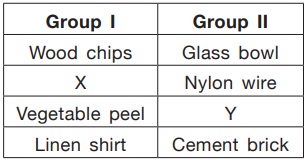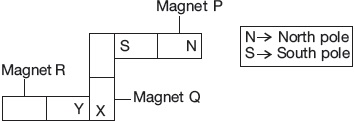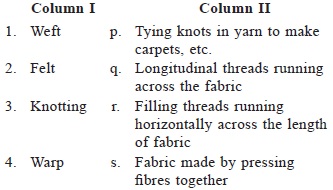Subject :NSO Class : Class 4
Subject :NSO Class : Class 5
Post Your Answer
Subject :NSO Class : Class 4
Refer to the given classification table and select the option that correctly identifies X and Y.

| X | Y | |
|---|---|---|
| A | Cotton wool | Plastic fork |
| B | Hair | Cow dung |
| C | Nail | Human excreta |
| D | Ceramic bowl | Leftover food |
Post Your Answer
Subject :NSO Class : Class 8
Post Your Answer
Subject :NSO Class : Class 4
In which of the following options, wheel and axle is NOT used?
ADoor knob
BTweezers
CSkateboard
DBus
Post Your Answer
Subject :NSO Class : Class 8
Post Your Answer
Subject :NSO Class : Class 4
The given diagram shows magnet P, magnet Q and magnet R.

Based on the diagram, identify the poles at X and Y.
| X | Y | |
|---|---|---|
| A | North pole | North pole |
| B | North pole | South pole |
| C | South pole | North pole |
| D | South pole | South pole |
Post Your Answer
Subject :NSO Class : Class 7
Post Your Answer
Subject :NSO Class : Class 8
Read the given paragraph carefully and fill in the
blanks by choosing the appropriate option.
(i) is a thick dark, strong smelling liquid found
deep in the earth. Unrefined (i) is called (ii) and
(iii) gets collected over (i) inside the earth. During
fractional distillation of (i), the fraction with (iv)
boiling point condenses in the uppermost region and
uncondensed (v) comes out of the fractionating
tower.
| (i) | (ii) | (iii) | (iv) | (v) | |
| A | Petrol | Petroleum | Methane gas | Highest | Natural gas |
| B | Kerosene | Petrol | Hydrogen gas | Lowest | Methane gas |
| C | Petroleum | Crude oil | Natural gas | Lowest | Petroleum gas |
| D | Petrol | Petroleum | Hydrogen gas | Highest | Natural gas |
the answer is c


